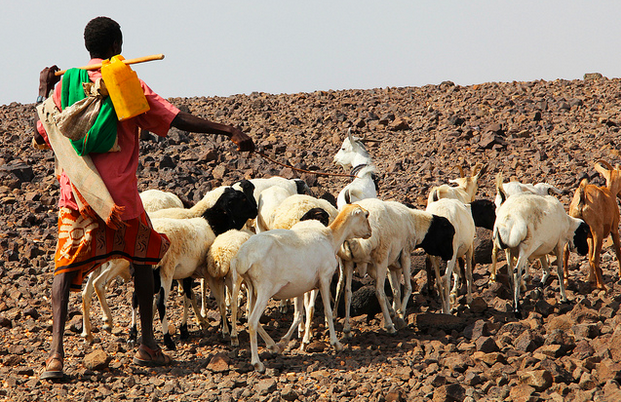ADDIS ABABA – Often dubbed an “African tiger” after a decade of economic growth averaging 10 per cent a year between 2004 and 2014, Ethiopia is in a state of transformation.
In an ambitious bid to achieve the status of a middle-income country by 2025, the government has developed an extensive blueprint for progress — its Growth and Transformation Plan 2015-2020 — which has prioritised the development of agriculture.
More specifically, the plan identifies the role of the livestock sector in helping to achieve some of the most critical sustainable development goals: reducing poverty by almost 20 per cent, raising national incomes, increasing exports and greatly improving the food and nutritional security of rural and urban people.
Until now, most developing countries that rely heavily on small-scale agriculture, including varied livestock production systems, have not invested well or sufficiently in the livestock sector, largely due to the lack of a clear, strategic roadmap.
The International Livestock Research Institute (ILRI), as part of a project funded by the Gates Foundation, has supported efforts led by Ethiopia’s Ministry of Livestock and Fisheries to draw up a detailed plan to develop the livestock sector that will maximise the country’s chances of reaching middle-income status.
The Ethiopia livestock master plan is a comprehensive assessment of the investment opportunities to increase meat, milk and egg production, respectively, by 58, 83 and a massive 828 per cent over 2012 levels by 2020.
It projects that such greater productivity and the resulting higher income levels would end poverty for more than 2.3m of Ethiopia’s 11m livestock-keeping households.
Achieving this would cost just over $760m over a five-year period, with interventions in three keys areas: animal genetics, feed and health.
While most livestock in Ethiopia are local breeds, research shows that crossbred cattle, if adequately fed, can produce 10 times more milk than their local counterparts. Putting into action a livestock breeding strategy to raise the number of crossbreds could pave the way for improved cattle breeds that could, with health and feeding improvements, nearly double the dairy production of Ethiopia’s small-scale farmers and herders.
Genetic livestock improvement is not enough on its own. Genetically improved crossbred animals need to be given better feeds if they are to produce higher yields of milk, meat and eggs. To accomplish this, Ethiopia will need to overcome chronic shortages of animal forage and processed feeds and increase its investment in new, improved feeds.
Finally, realising the potential of the country’s livestock sector will also need improvements to its animal health services to tackle high calf mortality rates, inadequate veterinary supplies and inefficient veterinary services. To this end, the master plan calls for more and better public and private animal health services and a more effective regulatory body at federal and regional levels.
The bounty for attracting sufficient private and public investment, and adopting new policies to enact the livestock master plan, would be the transition of millions of Ethiopia’s family farmers and herders from subsistence to market-based livestock producers.
This would have the dual benefit of feeding Ethiopia’s growing population and helping to drive the country’s GDP growth to even higher levels.
For example, the plan forecasts achieving a surplus of 2.5bn litres of fresh milk by 2020. Not only would this provide the country with greater food and nutritional security; it would also create new opportunities for Ethiopian businesses to process the country’s fresh milk into products for domestic and export markets.
The plan also outlines how improved rural livestock livelihoods will benefit people in towns and cities through lower prices for milk, meat and eggs and the opening of new job opportunities.
The Ethiopian government has set up four agro-industry parks to attract private sector investment in agro-processing, to help speed up the transformation of the livestock sector.
Having worked with partners to develop this master plan, I am confident that solid investments that focus on small-scale livestock producers, processors and marketers can jump-start the engines of the economic powerhouses of the future, not just of Ethiopia but of other developing countries.
Last year, ILRI scientists began working with Tanzanian and Rwandan scientists and government officials to develop livestock master plans in those countries. It is our hope that successful implementation of Ethiopia’s plan will lead to a “chain reaction” across the continent.
We know that success of these plans lies in their execution, and that such execution requires significant effort and co-operation among local, national, regional and international livestock partners.
But as the livestock sector is already a huge contributor to GDP in agriculturally dependent low to middle-income countries, investments in the right areas and at the right levels offer unprecedented potential for sustainable, broad-based growth and development.
The Ethiopia livestock master plan makes the case for targeted investments in livestock both clear and compelling. What remains is to find the best ways for the plan to be realised to help give this African tiger its roar.
Barry Shapiro is senior livestock development adviser at the International Livestock Research Institute.



